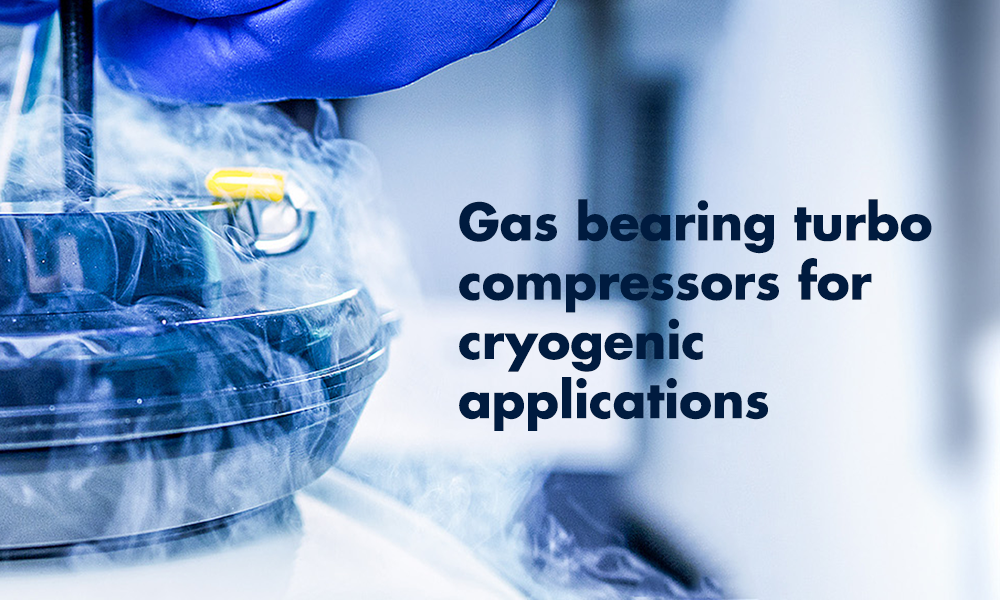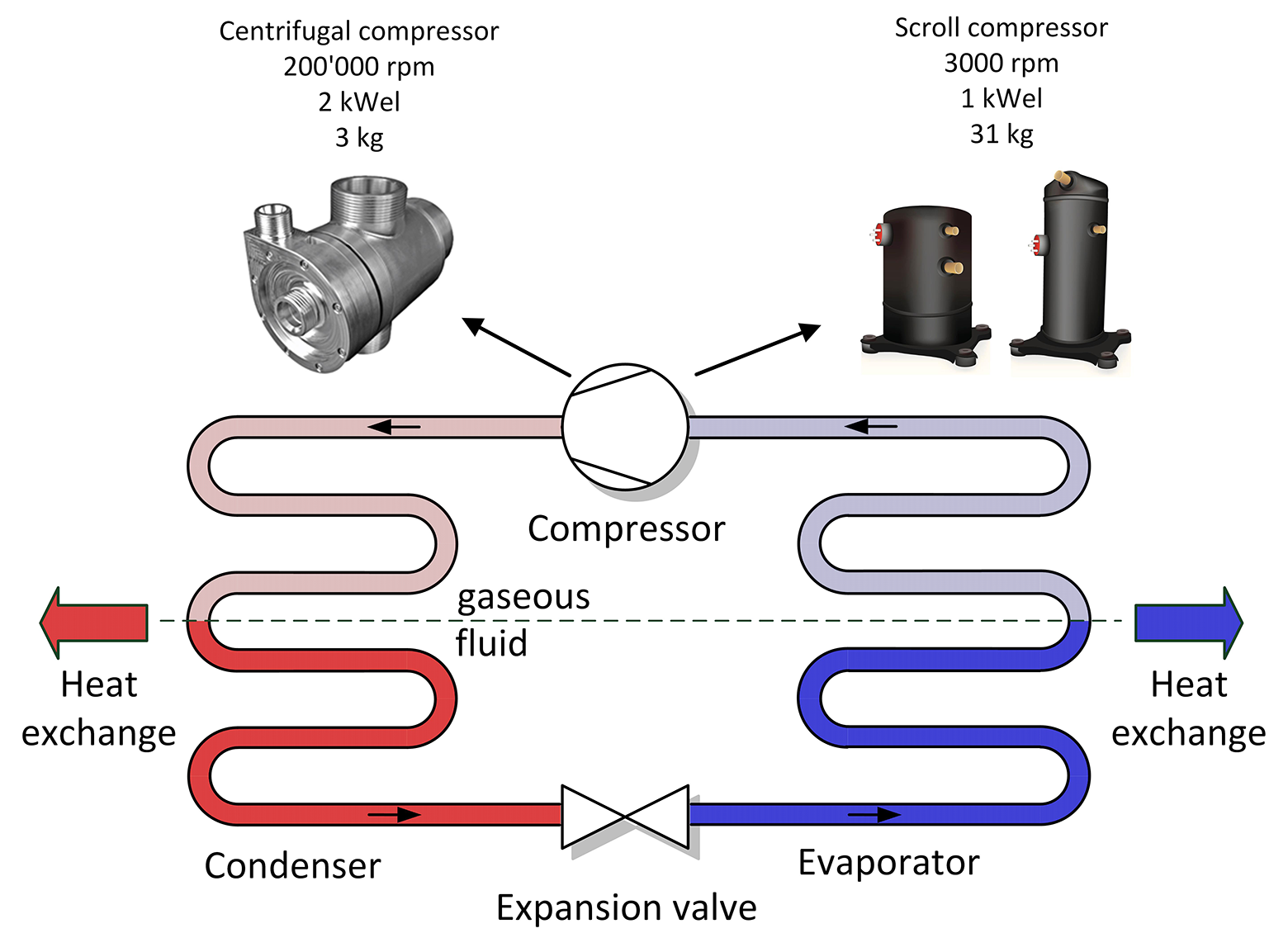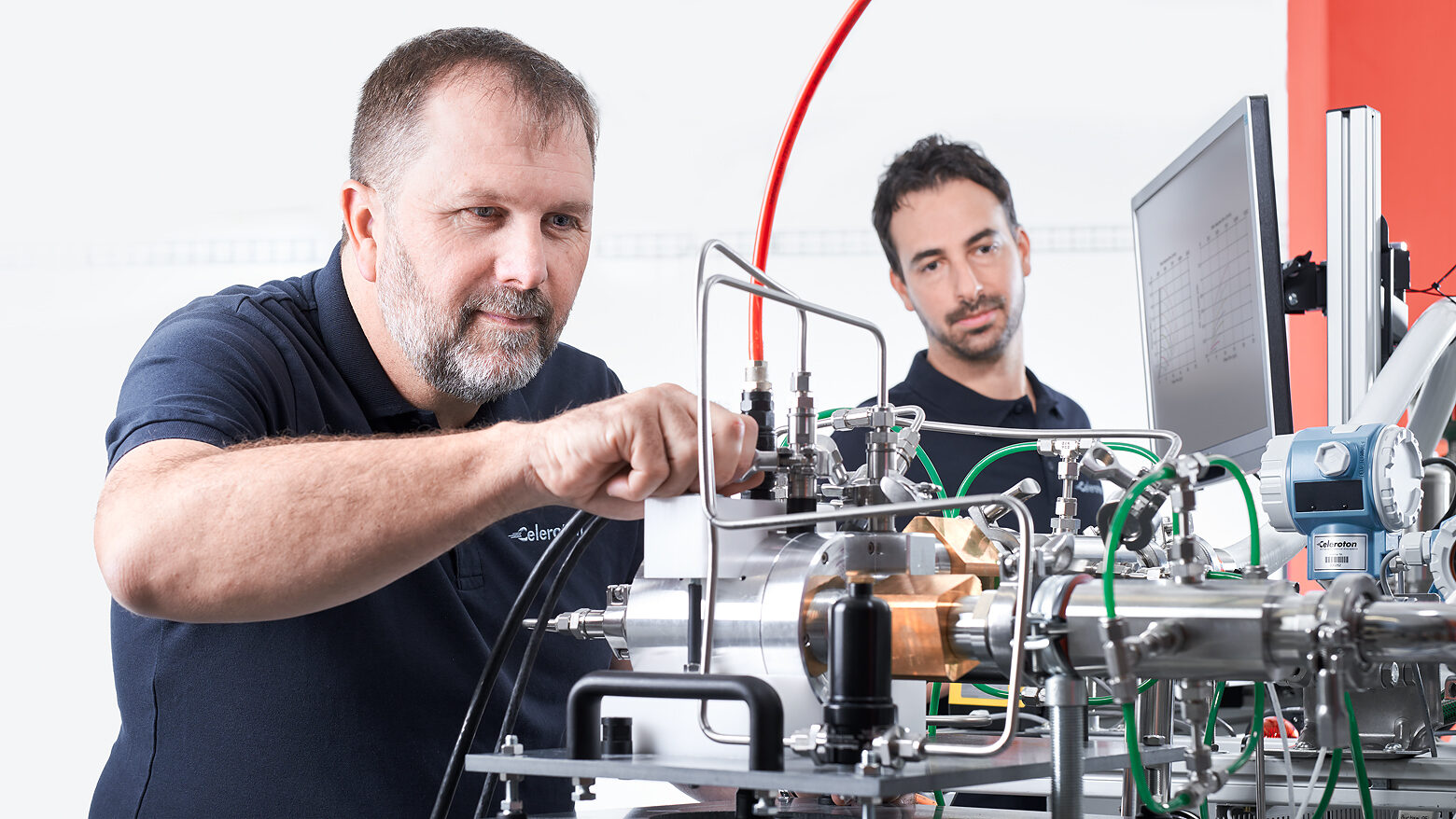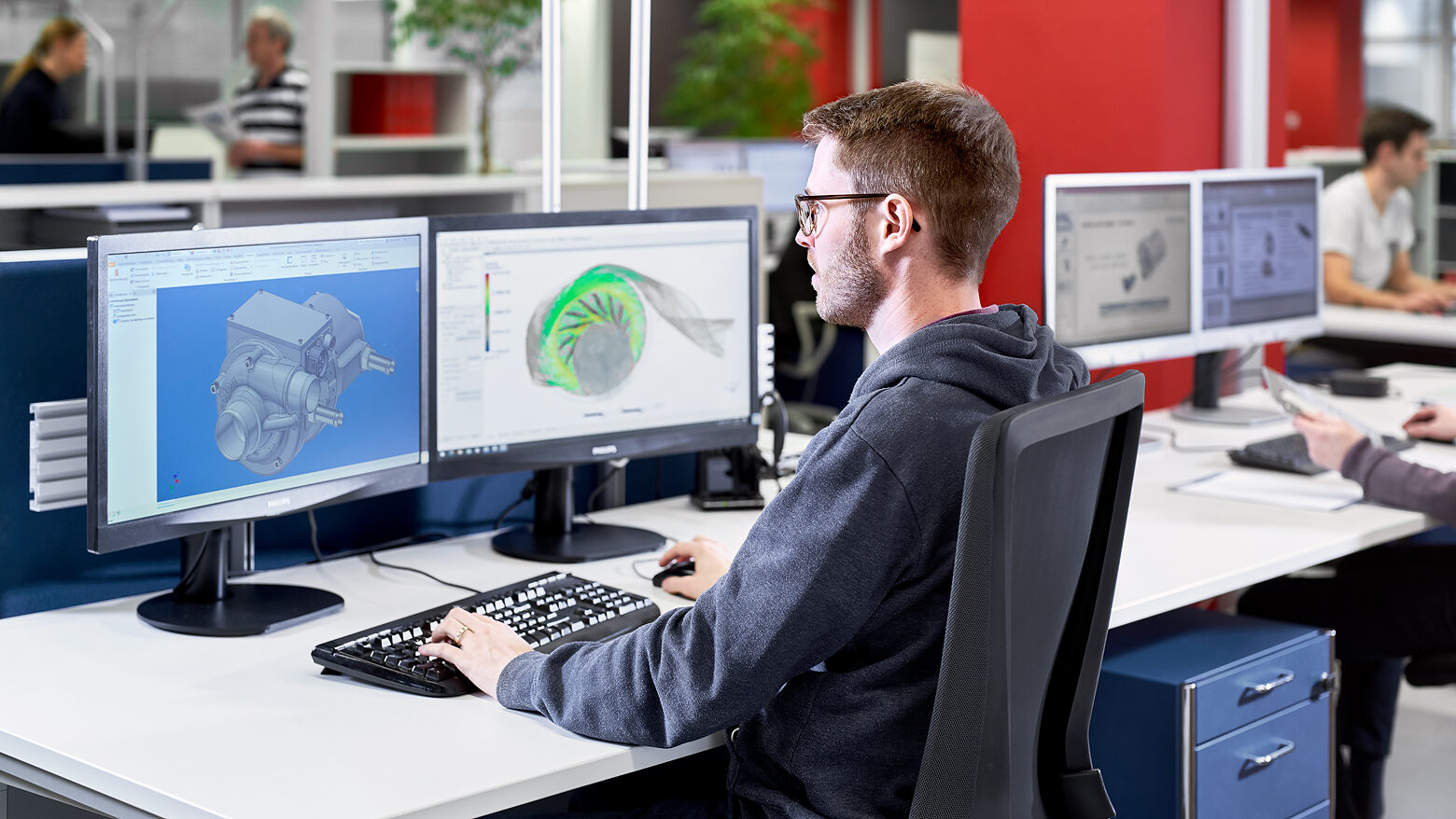Compact, efficient, oil-free and quiet
Solutions for refrigerant circuits with demanding technical requirements
- Oil-free operation — and therefore prevention of foaming
- Maintenance-free — No rotating seals and therefore
no leaks
- Compact and lightweight — Low refrigerant volume
- Quiet
- Low vibration emission
The macro-trend of sustainable, secure and competitive energy production and use, while at the same time combating climate change is leading to a shift in heating and cooling applications towards refrigerant circuits driven by electric compressors. New applications include heating/cooling/air conditioning of buildings, replacement of heating resistors by heat pumps in electric vehicles, cooling in aircraft, air taxis, drones, helicopters, cooling of electronics in confined spaces in data centers, battery storage, spacecraft, satellites and unmanned aerial vehicles (UAVs), and general applications involving refrigerants with lower global warming potential (GWP).
Unlike screw compressors or other displacement compressors used in modern refrigerant circuits, centrifugal compressors can be operated with non-contact gas bearings and a direct-drive, high-speed motor. This has several advantages over displacement compressors for compressing refrigerants. In particular, the compressors are much smaller and lighter. In addition oil-free operation is enabled by using the refrigerant itself as a lubricant for the gas bearing. In refrigerant circuits, oil-free operation is preferred in order to prevent foaming of the refrigerant. In addition, no rotating (or moving) seals are required, virtually eliminating leaks and making the compressors maintenance-free, noise and vibration emissions are much lower and the efficiency and thus the COP of the refrigerant circuit are very high.
Space
The aerospace industry has even stricter requirements than conventional industries. The focus is on particularly compact and lightweight construction, as every cubic centimeter saved and every gram of weight reduces costs significantly. At the same time, exceptionally high reliability is required, as maintenance in space is very difficult or even impossible.
A key issue in space travel is thermal management, which is more difficult in space because there is no convection without an atmosphere, only radiation. In the past, heat pipes and mechanically pumped liquid loops were used to remove the heat generated by instruments or people. With Q ∝ T4 for radiation the heat dissipation capacity is increasing with higher temperatures, leading to heat pumps becoming more interesting. This can be seen by increasing research and development activities for space heat pumps. In satellites, or in future space data centers, this serves to efficiently transport heat from its source, e.g., telecom electronics, to the radiator on the outside of the satellite. This concept can also be applied to space stations, for example, to regulate the interior temperature, offering scalable solutions for future Lunar or Martian habitats.
Gas-bearing centrifugal compressors (turbo compressors) are used as the core component of such heat pumps, as they ideally meet the space-specific requirements of low weight, compact design, long service life, low micro-vibration emissions, and oil-free operation. Celeroton’s high-speed compressors provide the optimal solution for this: thanks to gas bearings, the compressors operate completely oil-free, which significantly reduces the risk of refrigerant foaming. In addition, the operating principle of the continuous flow machine translates to operation without pressure pulsations, which further reduces vibration emissions significantly.
The possible applications for heat pumps and thus also for turbo compressors from Celeroton are diverse and are becoming increasingly important in the development of space applications.





